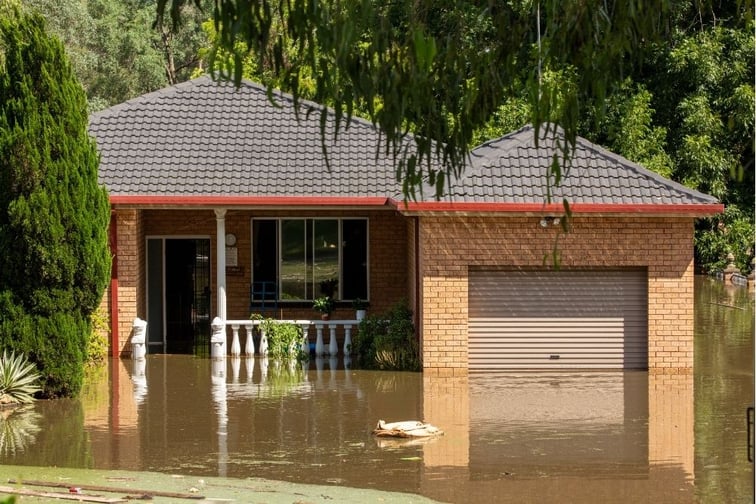

Over the past year, property market performance across Australia’s east coast, particularly South East Queensland and Northern New South Wales, has seen leading price growth, increased auction activity, and favourable internal migration trends. The end of February, however, was a sobering reminder of the impact of catastrophic weather events and climate change.
In its latest Property Pulse & Auction Review, CoreLogic said it has received numerous enquiries from the industry and the media regarding how current floods will impact property values, rents, and availability of dwellings.
“Following the Brisbane floods in 2011, the city’s dwelling values sustained a decline from January 2011 to January 2012, which bottomed out at -6.1%,” said Eliza Owen, head of research at CoreLogic. “This decline kicked into recovery mode off the back of several cash-rate reductions from November 2011. However, it was not until March 2014 that the dwelling market fully recovered the value recorded in December 2010.”
Owen said that it is difficult to isolate the impact of flooding on property values, as Brisbane dwelling values were already trending lower from mid-2010, due to a tightening in monetary policy amid a resources boom, and Australia’s recovery from the GFC.
Talking about value recovery period, Owen said although suburbs inundated by the 2011 floods recorded a larger downturn relative to the Brisbane average in the year following the flood, prices in most suburbs recovered within three to five years, with riverside precincts still attracting premium values compared to areas located further from the river prior to the latest flooding event.
“Australians have historically placed a high value on housing within close proximity to the water; whether this trend changes based on forecasts of more frequent severe weather events is yet to be seen,” she said.
Another notable impact on the Brisbane market through the period was a decline in transaction activity.
“Through January 2011, monthly sales volumes reached their lowest level over the past 20 years, at 2,115 transactions across Greater Brisbane,” Owen said. “New listings added to the market were also notably lower through January 2011 compared to the previous year (down -27.8%), but increased remarkably in the following month (jumping 46.8%).”
Meanwhile, rental values across the eight suburbs analysed from 2011 did not show a decline in the hedonic rental value index. Instead, rent values saw an average 4.3% increase over the year to January 2012, due perhaps to more subdued rental stock levels available at the time, which could have put upward pressure on advertised rents, Owen said.
“The cost and implications for the housing market of the current floods is difficult to evaluate, given that for many coastal areas, clean up and damage assessment is yet to commence,” Owen said. “Additionally, the operational environment is very different, with monetary policy more likely to tighten in the next 12 months, as opposed to 2011, when the market was supported by a fall in the cash rate within a year of the flooding event. Ultimately, this event reinforces the consequences of climate change, which poses a great challenge to the real estate and finance sectors now and in the future.”
